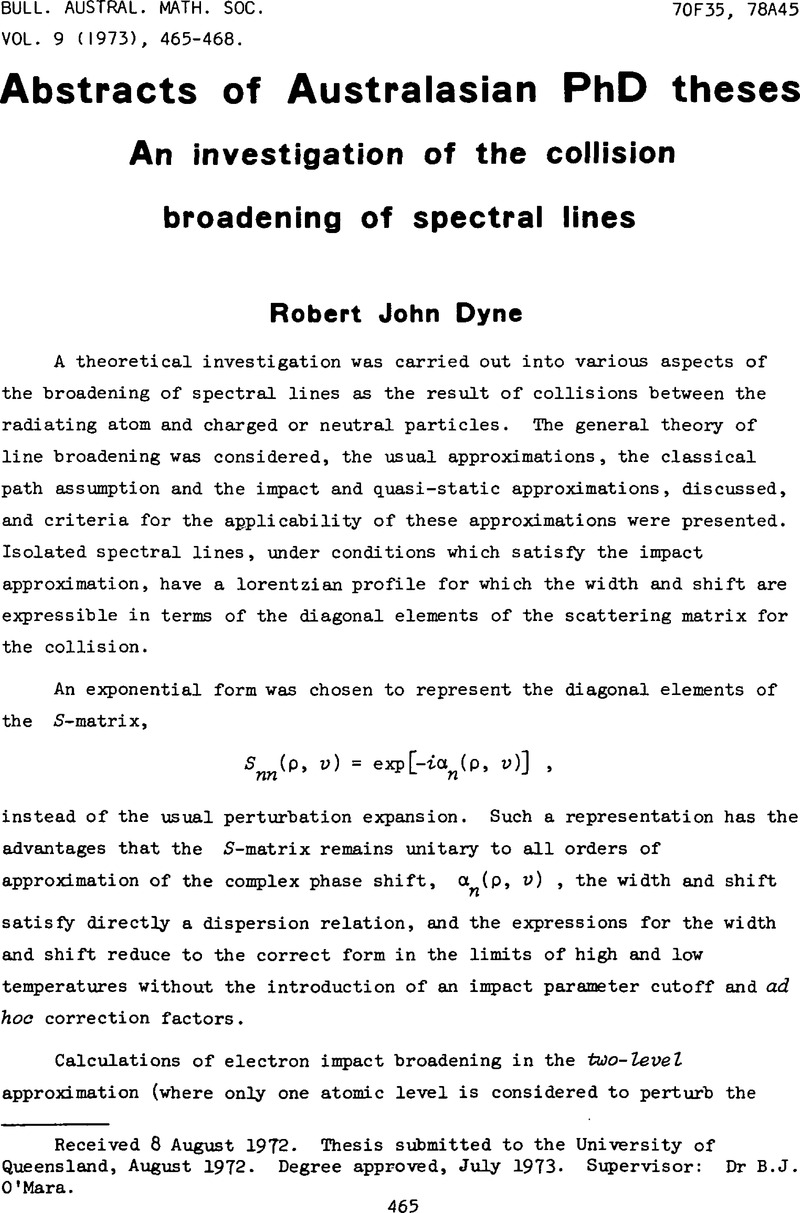No CrossRef data available.
Article contents
An investigation of the collision broadening of spectral lines
Published online by Cambridge University Press: 17 April 2009
Abstract
An abstract is not available for this content so a preview has been provided. As you have access to this content, a full PDF is available via the ‘Save PDF’ action button.

- Type
- Abstracts of Australasian PhD Theses
- Information
- Bulletin of the Australian Mathematical Society , Volume 9 , Issue 3 , December 1973 , pp. 465 - 468
- Copyright
- Copyright © Australian Mathematical Society 1973
References
[1]Baylis, W.E., “Semiempirical, pseudopotential calculation of alkali-noble-gas interatomic potentials”, J. Chem. Phys. 51 (1969), 2665–2679.CrossRefGoogle Scholar
[2]Brueckner, Keith A., “Collision broadening by neutral hydrogen”, Astrophys. J. 169 (1971),.621–632.CrossRefGoogle Scholar
[3]Dyne, R.J. and O'Mara, B.J., “A convergent theory of spectral line broadening in the impact approximation”, Astronom. and Astrophys. 18 (1972), 363–372.Google Scholar
[4]Griem, H.R., Baranger, M., Kolb, A.C. and Oertel, G., “Stark broadening of neutral helium lines in a-plasma”, Phys. Rev. 125 (1962), 177–195.CrossRefGoogle Scholar
[5]Lewis, E.L., McNamara, L.F. and Michels, H.H., “Broadening of the sodium D lines by atomic hydrogen. An analysis in terms of the NaH molecular potentials”, Phys. Rev. A (3) 3 (1971), 1939–1948.CrossRefGoogle Scholar
[6]Roueff, E., “A theoretical model for the interaction between excited and ground state atoms. Application to pressure broadening”, Astronom. and Astrophys. 7 (1970), 4–9.Google Scholar


